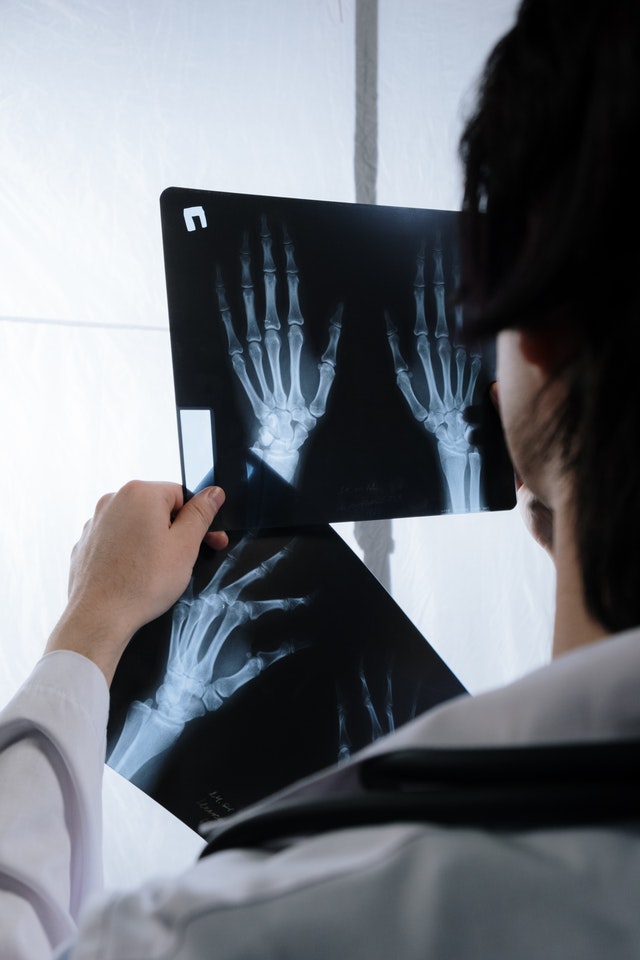Enzymatic process are critical for bone health. And, as this new study shows, a loss of enzymatic processes within the body can increase the risk of bone fracture.

Enzymatic processes are essential to any number of chemical reactions that occur within the body, including the production of the extracellular matrix within bone that is critical for mechanical support. Phosphorylation, one of those key enzymatic processes, is the attachment of a phosphoryl to a protein, and is critical for cellular regulation. This process plays a role in many diseases, but until now, researchers didn’t know if it altered tissue integrity and organ function.
This new insight published in eLife was led by an international team of scientists and engineers, including Deepak Vashishth, the director of the Center for Biotechnology and Interdisciplinary Studies (CBIS) at Rensselaer Polytechnic Institute.
Proteins, Enzymes and Bone Fracture Risk
In this paper, Vashishth and a team of researchers looked at a protein osteopontin, which plays a vital role in holding the matrix together.
- The researchers developed a process by which they could induce phosphorylation — or its counterpart, dephosphorylation — in bones from genetically modified mice, some that had osteopontin and others that did not.
- By comparing results from the two groups, researchers found that fracture toughness, a measure of bone’s mechanical strength, increased with osteopontin phosphorylation and declined with dephosphorylation.
- More specifically, phosphorylation enhanced crosslinks and increased the attraction between the charged groups on osteopontin and bone mineral, making bone stronger and bone fracture more difficult.
“This is the first study that lays down that phosphorylation in bone matters, particularly how it assists bone in releasing energy, and that loss of this modification is bad for bone,” Vashishth said.
The team also studied the effect of osteopontin phosphorylation levels in the rare bone diseases hypophosphatemia and hyperphosphatemia, which are associated with skeletal deformities. In both diseases, Vashishth said, osteopontin phosphorylation levels decreased, a finding that lays the groundwork for further exploration.
“Another promising discovery was that these levels do change with diseases in bone,” Vashishth said. “Is phosphorylation directly affecting the fracture propensity of bones in these diseased conditions? And what therapeutic tools can we use to fix this? These are the questions that we want to investigate.”
Findings Not Limited to Bone Fracture
The team’s findings may also be applied to similar processes within other connective tissues and possible therapeutics to counteract abnormal osteopontin phosphorylation levels.
“This is not just specific to bone, because phosphorylation is a more ubiquitous change in other tissues in the body,” Vashishth said. “Osteopontin is not only in bone, it’s in other tissues in our body, like our kidneys and several other places. This research can also shed light on other things that can happen throughout the body.”
Conclusion/ Fracture toughness, a measure of bone’s mechanical competence, increased with ex-vivo phosphorylation of wildtype mouse bones and declined with ex-vivo dephosphorylation. In osteopontin-deficient mice, global matrix phosphorylation level was not associated with toughness. Our findings suggest that phosphorylated osteopontin promotes fracture toughness in a dose-dependent manner through increased interfacial bond formation. In the absence of osteopontin, phosphorylation increases electrostatic repulsion, and likely protein alignment and interfilament distance leading to decreased fracture resistance. These mechanisms may be of importance in other connective tissues, and the key to unraveling cell–matrix interactions in diseases.
Click Here for Full Text Study




